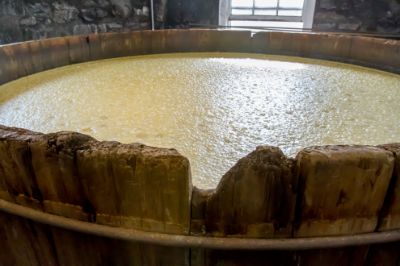Using oak barrels for fermenting is a time-honored tradition with deep roots in the production of various alcoholic beverages such as wine, whiskey, and even some beers. This practice not only has historical significance but also plays a crucial role in flavor development. Here's an in-depth look at the use of oak barrels in fermentation:
Historical Context
The use of oak barrels dates back centuries, primarily in Europe. Initially, oak was chosen for practical reasons—it was abundant, durable, and easily shaped. Over time, the impact of oak on the flavors and quality of the beverages stored within became evident, turning these barrels into a cornerstone of the aging process.
Oak's Unique Qualities
Oak wood is favored for its unique characteristics:
- Porous Nature: Allows a small amount of oxygen to interact with the beverage, aiding in the maturation process.
- Flavor Compounds: Oak imparts distinctive flavors such as vanilla, caramel, and spices, varying depending on the type of oak and its origin.
- Tannins: These natural compounds in oak influence the texture and aging potential of the beverage.
Types of Oak
Different types of oak affect the fermenting beverage differently:
- American Oak: Known for its intense, sweet flavors, often contributing notes of vanilla and coconut.
- French Oak: More subtle than American oak, it imparts elegant spice and sophisticated tannin structure.
- Others: Oaks from regions like Hungary and Slovenia are also used, each bringing unique qualities to the table.
The Fermentation Process
In the context of fermentation, oak barrels are typically used in the aging process rather than the primary fermentation phase. The micro-oxygenation that occurs in barrels helps in stabilizing the color and softening the tannins in wines. In whiskey production, the charred interior of oak barrels plays a key role in the development of the drink's flavor profile and color.
Maintenance and Sustainability
Maintaining oak barrels is essential for their repeated use. They must be cleaned, stored properly, and occasionally re-charred (in the case of whiskey barrels). In recent years, sustainability concerns have risen, leading to practices like reusing barrels and sourcing wood from sustainably managed forests.
Modern Alternatives
While traditional oak barrels remain popular, modern alternatives like stainless steel tanks with oak chips or staves are also used. These methods attempt to mimic the effects of barrel aging in a more controlled and economical way.
Conclusion
The use of oak barrels in fermenting is more than just a practice—it's an art. It requires understanding the nuances of wood and its interaction with the beverage. As the industry evolves, the balance between tradition and innovation continues to shape the future of oak barrel fermentation. Whether for wine, whiskey, or other beverages, the role of oak in fermentation remains an integral part of creating depth and complexity in flavor profiles.


